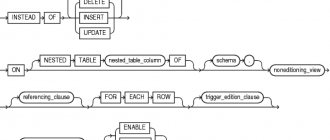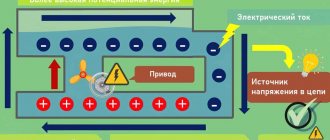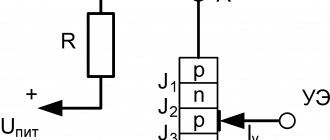Feeder
- bottom fishing tackle, as well as the method of catching fish with this tackle. The peculiarity of this fishing method is the use of special rods with a flexible tip to indicate a bite. It is also possible to use additional bite alarms (bells, bells).
Feeder
- tackle with a feeder, designed for fishing from the bottom with constant feeding of the fishing spot. The frequency of recasting is very wide, from several seconds (possibly with an unsuccessful hook or false hook) to several hours. There are no strict rules. Everything is at the discretion of the fisherman. After casting, the bait leaves the feeder - some will be eaten by the fish, some will spread along the bottom, creating a so-called bait spot.
Content
- 1 Feeder gear arrangement 1.1 Feeder rods 1.1.1 Separation of feeder rods by class
- 1.1.2 Feeder rod test
- 1.1.3 Feeder rod length
- 1.1.4 Feeder rod structure
- 1.2.1 Gear ratio
- 1.4.1 Complete set of feeder equipment
- 2.1 Bite
Feeder gear device
Feeder rods
Feeder
The main differences between a feeder rod and a spinning rod are the presence of a larger number of small guides on low holders and several thin interchangeable tips designed for fishing on feeders of different weights, as well as bite alarms. The tips have different hardness and allow you to choose the optimal balance between bite alarm and the weight of the feeder. A feeder rod is the main difference from a donkey made from a spinning rod.
Division of feeder rods by class
They are divided into three classes - light (light), medium (medium) and heavy (heavy). Separate classes include an ultra-light feeder, popularly called a picker, and an extra-heavy feeder, designed for fishing with heavy equipment at long distances or in strong currents.
The majority of fishermen choose the middle class. This is the most versatile rod that can be adapted to most conditions. They can fish almost always and everywhere. This is the kind of rod that is suitable for beginner anglers taking their first steps in feeder fishing.
Feeder rod test
The rod test is directly proportional to the class. Essentially, these numbers will show the power of the blank and the maximum permissible weight of the equipment used for fishing. The middle class roughly corresponds to the weight range from 40 to 80 grams. Well, accordingly, the light class allows you to use equipment weighing up to 40 grams, and the heavy class – over 80 grams.
Never exceed the upper limit of the test, although most manufacturers play it safe by deliberately increasing the maximum weight. It is better to underload it (at least by 10 grams).
Feeder rod length
The feeder rod mainly consists of three or four parts and has a length of two to four and a half meters. The tip is brightly colored for greater bite visibility.
Selected depending on the distance at which you will fish. Long, hundred-meter casts are necessary on reservoirs or in large bays, and if your area does not have them, then there is no need to take long, four-meter heavy rods. On our rivers they most often fish with feeder rods three to three and a half meters long.
Feeder rod structure
The action directly depends on the length and class of the rod. Long, heavy rods have a super-fast action. Conversely, short lungs have a soft parabolic slow or medium action.
If we compare the differences in the structure of a feeder rod and a spinning rod, the difference is of course significant, since to carry out normal hooking of fish you still need a rigid form, the rest of which is included in the work only at the stage of fishing the fish or when casting.
It is very difficult to combine all these characteristics into one form, so manufacturers very often have to sacrifice something. As a result, almost all feeder rods are fast action, with rare exceptions - medium action. And it’s quite rare (I’ve only seen it a few times) to have a slow action form.
Feeder reel
Coil for feeder
For the feeder, you can use different coils, but with certain parameters. How do some reels differ from others, and which ones are most suitable for feeder fishing?
Gear ratio
The gear ratio is the speed of reel winding or reduction. It indicates how many times the rotor will turn during one revolution of the handle. The lower the ratio, the more powerful the reel, but the slower it rewinds the line. Such coils are called power or traction coils. The upper limit of these coils is 4.7:1. All-purpose or spinning reels have an upper limit of 5.5:1. Those reels with this parameter higher are called high-speed or match. For feeder fishing, experienced fishermen can use any reel, they just need to know when to use which one. Beginners are usually advised to start with universal ones. Their reeling speed is within normal limits, and a heavy feeder can be pulled against the current.
Spools
Spools vary in material composition and size. For feeder fishing, you need to have at least two spools: a metal one made of various aluminum alloys with the sides coated with titanium nitride without scratches and burrs - for the cord and graphite - for the fishing line. It is desirable that the line roller be also coated with titanium nitride. The size of the spool determines how much line or line you can wrap around it. It is enough if you take a C grade for the fishing line (3000 - 4000 according to the Shimanov classification), and a D for the cord (2000 - 3000, respectively). If you are buying a reel and find that there is no spare spool included, be sure to ask if they are sold separately and whether you can order it or buy it outright.
Friction clutch
This is the name of the braking system, which, when the fish jerks strongly, automatically resets the fishing line, preventing it from breaking. The clutch located directly in the spool is called the front clutch, and the one located at the rear of the reel body is called the rear clutch. The front clutch provides greater braking force, it is more finely adjusted and the reel is more compact and lighter. It is believed that the rear clutch is more convenient to adjust when fishing, and the spool is changed faster. Both have disadvantages: the front one gets clogged more often (you need to disassemble the spool and clean the discs more often), and the rear one tightens itself, especially when fishing with a line (needs constant monitoring). By and large, there is no difference between them in the fishing process. The main thing is how the reel “sits” on your rod, and whether it interferes with your casting. You can even come to the store with your fishing rod and try to fit the reel. It's convenient for you - it suits you. After all, it is not the seller or a casual acquaintance who will be sitting on the shore, but you.
Beyrunner
The baitrunner is an additional friction that allows the line to move smoothly even with minimal effort. It turns off automatically by turning the knob. Indispensable on a reel for carp fishing. If you have laid out several float rods, and cast one or two feeders for carp, you may well have to fish the rod far from the shore. Just for this case, they install a reel with a baitrunner. Such reels, with very rare exceptions, come with a main front drag.
Bearings
The number of bearings (5 - 6 is enough), anti-reverse, and laying out the fishing line for feeder fishing are so insignificant that it’s not worth talking about separately. The quality of the material and assembly of the coil and its operational reliability are important. Reputable companies have a full range of coils. Contact a friend who has experience using reels and ask which company’s products do not let him down. From the list of this company, choose for yourself.
fishing line
Correlation of tests by fishing line, bait and rod class
Braided fishing line is the feederist’s main tool for increasing the sensitivity of the tackle. Braided fishing line has many advantages: high tensile strength, low elongation, good wear resistance. It hardly stretches and has the ability to transfer even the lightest touch of the fish to the nozzle to the top. However, there are a number of features.
Many witnessed such a picture. The feeder sits motionless, hypnotizes the tip, and waits for a bite. Finally it came. Rod in hand, strong hook and... break! At this moment, the imagination usually turns on and the approximate dimensions of the caught fish are drawn in the head of the unlucky fisherman. Here you need to remember that braided fishing line does not need powerful hooks, because it conveys effort in both directions beautifully. There is a joke among experienced feeders that at such a moment it is enough to simply pick up the rod. It is possible that, under certain circumstances, there is a significant amount of truth in this joke.
When using braided fishing line, you need to pay special attention to your gear. When fishing with a feeder, it is often necessary to re-throw the tackle. At the same time, the weight of the feeder is often quite large and this means that the reel roller and rod rings must have good wear resistance, the brake must have smooth operation and a significant range of adjustment. If we compare “braid” with monofilament, then when fishing for fish, braided fishing line does not smooth out the jerks of the prey. At such a moment, the rod itself and the friction brake of the reel are absorbed. Also, most of the load during fishing falls on the leash, which almost always cannot withstand the load.
To smooth out possible negative consequences when fishing, you need to adjust the friction brake so that when the fish jerks, it gives up the line before the critical load on the leash occurs. Actually, for this purpose, when fishing with feeder, experienced fishermen use themselves, and advise others to purchase, a reel with a lever for quickly adjusting the braking mechanism. One more tip. When using heavy feeders and when fishing over long distances, the index finger must be sealed with a plaster in the place where the fishing line lies when casting.
And a couple more questions
In fact, the information described above is quite enough to decide on the purchase of your first feeder. But let’s answer a few more of the most popular questions.
How many quivertypes should be in a set and how to choose?
If you are not a handyman and don’t break tips on every fishing trip, then don’t really care. For fishing in still waters, 2 tips are enough - an ounce for fishing in comfortable conditions and a 1.5-2 ounce for more difficult situations, as well as for night fishing. On the river you should install a harder quivertip - 3-4 ounces. And there’s no need to talk about low sensitivity here - it’s hard to miss a powerful river “feed” with a flip of the rod from the stand.
The test on the form is the weight of the feeder or the total weight of the equipment?
As a rule, total. Unless the manufacturer came up with something else. That is, 80 grams of dough is approximately 60 grams of the weight of the feeder plus 15-20 grams of feed. But you should not overload the form - this can cause damage.
Build a rod. Which is better?
The one that fits into your hand. Some anglers prefer a fast action feeder, while others, on the contrary, adore English parabolics. Giving advice here is a thankless task. It should only be noted that a fast fishing rod is better for the river; it feels more confident in the river current.
Are there universal fishing rods?
In general, no, but if you really want to and put aside extremes, yes. This will be a medium with a length of 3.6 and with a dough of up to 90-100 grams. Such a fishing rod will perform well both on standing reservoirs and on average river currents. If you try hard, you can fish with it further than 50 meters (in the calm or downwind). Yes, it gives in to ultra-long ranges and a strong river stream, which requires a feeder weighing more than 120 grams, however, as Shnur used to say, “that’s not what the play is about.”
Feeder fishing technique
Fishing on a feeder
requires the angler to have good fishing technique. To begin with, it is important to properly equip the position and position the rod correctly. If possible, it is better to sit a little further from the water’s edge and place the rod not parallel, but slightly at an angle to the shore. The angle between the tip and the main line should not be too sharp or, conversely, too obtuse, as this reduces sensitivity and affects the clarity of hooks. It is desirable that it be close to straight in the range of 70-110°.
In addition, do not forget about the possibility of installing the rod at a large angle relative to the ground. This can be useful not only when fishing in the current, but also in standing reservoirs. Remember: the less line is in the water, the less pressure on it, which means the higher the sensitivity and more effective the hooking. However, there may be deviations from this rule, for example, when fishing from high (more than 1 m) banks or in strong winds, when, on the contrary, it is advisable to lower the rod lower in order to sink the line.
The ability to make accurate casts will also be useful to you. If the distance between the points of impact of individual feeders with bait is too great, then success will definitely take a long time to arrive. After all, the principle itself, and the main advantage of the feeder, is precisely that it is possible to create a zone of “spot” concentrated feeding far from the shore. But this can only happen with well-aimed casts.
How to achieve this? First, you need to select a landmark on the opposite bank - a separate tree, house, pillar, etc. You need to throw with the same strength and technique every time. To measure the distance over which the feeder should fly, after the first accurate cast, you can fasten the fishing line in a clip on the reel spool. This method requires caution - casting too hard can break the line. To avoid this, you need to raise the rod vertically in the final phase of the feeder’s flight and slightly relax your wrist. By the way, with this casting technique there is practically no overlap between the leash and the feeder, since the leash with the nozzle on the hook flies forward by inertia, stretching out in a straight line.
Immediately after casting, the tip of the rod must be lowered into the water and the fishing line must be submerged with a quick movement of the rod. After this, the feeder is placed on a stand and the fishing line is reeled in a little, taking out the slack so that the tip is slightly tense.
Casting feeder gear
Another fairly typical mistake is incorrect cutting. When the tip of the feeder begins to tremble when biting, you should slowly take the feeder in your hands and evenly and smoothly pull it back until contact is established with the hooked fish. But hasty and sharp hooks most often end in the loss of fish, breakage of the leader, or, even worse, breakage of the rod.
Bites when fishing with a feeder in the current are much more expressive than in still water. The best bites are those in which the fish takes the bait and pulls it to the side or, like bream, lifts it up. In these cases, the tip of the rod either clearly bends, or after sharp bending it completely unbends - it folds back with a slight slack in the line. But it also happens that you just notice the shaking of the whip, and then it’s not easy to determine what exactly to do - hook or wait. Most often, this shaking occurs due to the fact that the fish simply approached the bait and touched the fishing line or feeder.
If the tip of the rod bends sharply, but not much, and then immediately quickly returns to its original position, and when hooking no one sits on the hook, it means that a small fish is most likely interested in the bait. Don't be upset. Continue fishing and even slightly increase the pace of recasts - then you will either “overfeed” the small fish, or you will achieve your goal and attract the attention of a large fish.
Other options are to use larger attachments or have a shorter leash. By the way, if, after pulling out the rig, you find that the bait on the hook is pretty frayed, but the tip of the feeder did not notify you of this, then you should radically shorten the length of the leash.
Fishing with a feeder is simple at first glance, but it is not without reason that it belongs to the sport types of fishing. It implies fairly active actions by the fisherman. Frequent and accurate re-casting of gear, the ability to analyze well and quickly adapt to a changing situation, improvement in bait cooking and equipment making, timely reaction to bites - all this makes modern bottom fishing a truly sporting discipline. In my opinion, it is not inferior to sports float fishing either in dynamics, or in entertainment, or in sensations. And the reward is solid catches of good fish.
Bite
A bite on the feeder is usually expressed in the twitching of the nod, its bending, or, conversely, straightening. For beginners, it may be difficult at first to distinguish a bite from vibrations of the quiver tip caused by the current or wind. You should first of all pay attention to sudden movements and shaking of the tip of the feeder; as a rule, this is what a bite on the feeder looks like. On the contrary, smoother, slightly slower twitches, periodic during the flow, are usually false. In addition, the bite of different fish looks different. Oddly enough, it is often the little things that tug with the most energy. In practice, there have often been cases when, when biting, a fairly heavy feeder flew off the stand, and instead of the expected “large fish,” I pulled out a roach from half the palm of my hand! Most often, such tricks occur in the current. At first, it seems difficult to understand all this, however, with some experience, you can easily hook the long-awaited fish, despite the wind and current. Moreover, later, by the bite, you can often even determine who exactly is asking to join your fish tank.
Sweeping
Hooking when fishing on a feeder has some of its own characteristics. When using braided fishing line as the main line, never make a sharp, sweeping hook, as most of us are used to doing when fishing with “oak” donks - this will, at best, tear the bait out of the fish’s mouth, tearing its lip; at worst, you will simply lose the leash . For effective hooking, it is enough to remove the feeder from the stand and move its tip no further than half a meter to the side with a quick but smooth movement. This is where, by the way, one of the main properties of braid will appear - inextensibility. To make a normal long-range strike using monofilament line, sometimes you have to take several steps back!
The moment of hooking must be chosen based on the size of the bait and the expected catch. For example, when catching a cautious tench on a crawl, you shouldn’t rush, otherwise you can simply pull it out of the mouth of a surprised fish that has not yet had time to truly swallow it!
Fishing
Fishing for non-predatory fish on a feeder is also somewhat different from what we are used to; in this case, the inextensibility of the braid can do a disservice: we lose the shock-absorbing properties of the fishing line, and the entire burden of dampening the jerks of the fish falls on the rod. In this case, you can easily tear the fish’s lip or thin leash. Try to ensure that under no circumstances the line is pulled in line with the feeder. For the same reasons, you should never force fishing.
Considering the inextensibility of braided fishing line, fine-tune the friction brake of the reel. It is best to do this in advance by hanging a bottle of water on the fishing line, and the brake should operate reliably at a weight of 50%, maximum 70%, of the breaking strength of the fishing line used for the leash. Why not more? Yes, because the fishing line loses its strength at the knots, and the sun and sharp stones do not add it. In combination with the excellent shock-absorbing properties of the feeder blank, a good drag will allow you to soften the jerks of the fish and increase the chances of success when catching a trophy. Be sure to have a landing net with you and always use it, because we use thin leashes, and fishing with a feeder always brings surprises!
Accessories for feeder fishing
Accessories for feeder fishing
There are many useful devices and accessories that make fishing convenient and effective. Not all of them are designed specifically for the feeder, but many will suit us. You can do some things yourself, many things can be bought not in fishing stores, but in household goods or building materials stores, where they are often much cheaper. For example, it is completely incomprehensible to us why a fishing box in a fishing store is sold at one and a half to two times more expensive than a completely similar one in a building materials store.
Flyers and stands.
You shouldn’t cut them out of wood every time, spoiling green spaces; it’s better to buy them once. Good flyers are made of metal, they are durable and allow you to adjust the height and even the tilt. There are also special feeder stands.
Zadok.
Use long sports-type cages with a mesh of wood or synthetic fiber; in them the fish are much less injured. Never use cages made of metal mesh.
Landing net.
We have already talked about it, the main requirement is a reliable long handle and a fine mesh of fishing line in which the hook will not get tangled.
Bucket for bait.
Choose any suitable size, preferably with a lid. It’s good if there are two buckets: one for the still dry ready-made mixture, the other for the already moistened one. Then, if you make a mistake by adding too much water to the bait, you can always take some dry mixture from another bucket. In addition, unused dry bait can be saved until next time, which cannot be done with wet bait.
Fishing box.
A convenient thing for storing all sorts of small things, once you put all the things in its cells, then you can easily and quickly find everything.
Other bottom fishing methods
Carp fishing is carp fishing with very strong and powerful gear in a wait-and-see manner. To record bites, electronic bite alarms are used.
A bottom fishing rod made from a spinning rod with a feeder is a lazy and unsporting version of a feeder. All structural elements are less sensitive, and the ringing of a bell is usually used as a bite alarm.
An elastic band is a popular bottom fishing tackle for fishing with several hooks. It is especially good to catch saberfish with this type of gear.
The simplest donka-tack - several options for making non-sporting gear for bottom fishing.
see also
- How to choose a feeder
- Dialogues about fishing - Issue 044 - Moscow Channel. Poleshchik, Gustera
- Dialogues about fishing - Issue 059 - Istra Reservoir. Roach, bream, silver bream
- About Fishing Seriously - Feeder all year round
- About Fishing Seriously - Issue 01 - Fishing for crucian carp on a feeder
- About Fishing Seriously - Issue 08 - Catching carp with a feeder
- About Fishing Seriously - Issue 09 - Fishing for carp with a feeder
- About Fishing Seriously - Issue 19 - Feeder Fishing
- About Fishing Seriously - Reservoir roach and spring feeder
Leashes.
Leashes in feeder fishing are another very interesting topic. During the fishing process, you often have to change several leashes until you achieve the desired result.
The length of the leash can be from the shortest, traditional for the classic leash and its installations, to long one and a half meters. Everything depends on the fishing conditions and is selected during the fishing process.
The thickness of the leash is also selected at the time of fishing, depending on the type of fish you are targeting during fishing.
As for the material from which the leashes are knitted, it can be a regular monofilament line, fluorocarbon line or braided cord.
I will talk about how to knit leashes, as well as methods for selecting the right leash in the following articles.











